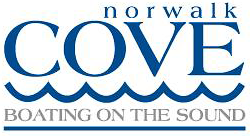Seamanship FAILS - in our own Backyard !
September 25, 2013 Imagine the joy of going to a boat show on your own boat, getting picked up by a professionally captained launch and enjoying a great day looking at new boats and hardware. Now, imagine heading back out to your boat and finding that it’s not anywhere near where you left it when you anchored ! Welcome to the Norwalk Boat Show 2013 where this happened to at least FIVE boats ! Prudent mariners, take note… With mid afternoon Harvest Moon high tides and a fast moving squall line sweeping through Norwalk harbor last Saturday, anchored boats started breaking loose right and left. At one point there were four guest boats being rescued at the same time by the Norwalk Police boat, SeaTow, TowBoat US AND the US Coast Guard while two others dragged anchor towards the Shore and Country Club beach ! What did they do wrong ? How could this have been prevented ? Simply by following the Rules of Anchoring 101: 1. Properly sized anchor and rode for your boat, appropriate for the bottom conditions. 2. Add chain (at least 3-6 feet) to the nylon rode (one boat being rescued had only line) 3. Know your bottom conditions (boats were anchored in the flats (i.e. MUD flats) right along a much deeper channel) 4. Know the tide (it was low in the morning and high at 1:15 PM) Base your calculations on HIGH TIDE 5. Know the formula for SCOPE and adjust it for the tide. (minimum of 7 times the high tide depth, 5 times if someone remains on board, 10 times for a storm) 6. Back Down to set the anchor (Dig it in deep) 7. Watch the weather – and check on your boat occasionally 8. Note that power boats and sailboats behave differently in the wind and river currents. Sailboats, with deeper keels, will swing with the current first and then with the wind (after it blows hard enough to overcome the pressure of the current). Powerboats, with less keel depth in the water, will swing to the wind first. Moral: Anchor near boats that will swing together in unison to prevent wrapping rodes. (or worse, hitting each other) 9. Leave someone on board (remember the term “Anchor Watch” ??) and take turns going ashore (there were a few boats who did this on both Sat & Sun) You can check wind forecasts by going to SailFlow.com. Power Boaters, Don’t let the name bother you – this is real data that should be used by every mariner (and after all, 4 out of 5 dragging boats were powerboats, so there is something to be learned here). http://www.sailflow.com/en-us/Search/ViewResults.aspx#41.133,-73.029,9,1 Note: Blue is forecast wind and Red is actual. Also note that the wind was fairly steady from the NNE and shifted to the West as the wind increased from the lull. This would make a boat swing, potentially causing a well set anchor to shift and drag. Then, as the wind shifted back and increased, the anchor had to dig back in to hold. Boats anchored in the flats right next to the channel with less scope would have been blown into the deeper channel (4 foot to about 13 foot depths) and would have dragged immediately. Totally preventable if "Anchoring 101" had been followed!
By Captain Rick Delfosse 203-216-7800 rick@rdelfosse.com
Rick is a Coast Guard captain, National Safe Boating Council close-quarters boat-handling and open water boat handling instructor, Connecticut and New York certified safe boating instructor and a US Sailing-certified instructor. He also conducts on-the-water courses and classroom seminars on coastal cruising and boating skills. The owner of a 43-foot pilothouse cutter and an Aquasport powerboat, he has extensive cruising and one-design, coastal and offshore racing experience.
Call him for Anchoring Lessons !
.
Note: Blue is forecast wind and Red is actual. Also note that the wind was fairly steady from the NNE and shifted to the West as the wind increased from the lull. This would make a boat swing, potentially causing a well set anchor to shift and drag. Then, as the wind shifted back and increased, the anchor had to dig back in to hold. Boats anchored in the flats right next to the channel with less scope would have been blown into the deeper channel (4 foot to about 13 foot depths) and would have dragged immediately. Totally preventable if "Anchoring 101" had been followed!
By Captain Rick Delfosse 203-216-7800 rick@rdelfosse.com
Rick is a Coast Guard captain, National Safe Boating Council close-quarters boat-handling and open water boat handling instructor, Connecticut and New York certified safe boating instructor and a US Sailing-certified instructor. He also conducts on-the-water courses and classroom seminars on coastal cruising and boating skills. The owner of a 43-foot pilothouse cutter and an Aquasport powerboat, he has extensive cruising and one-design, coastal and offshore racing experience.
Call him for Anchoring Lessons !
.
Categories: None
